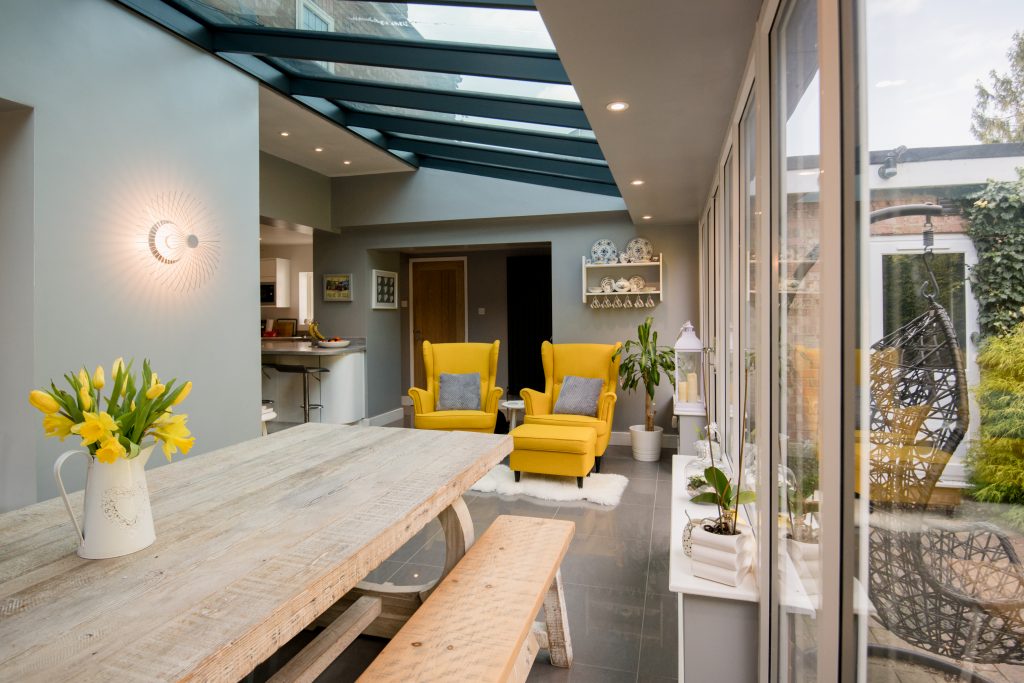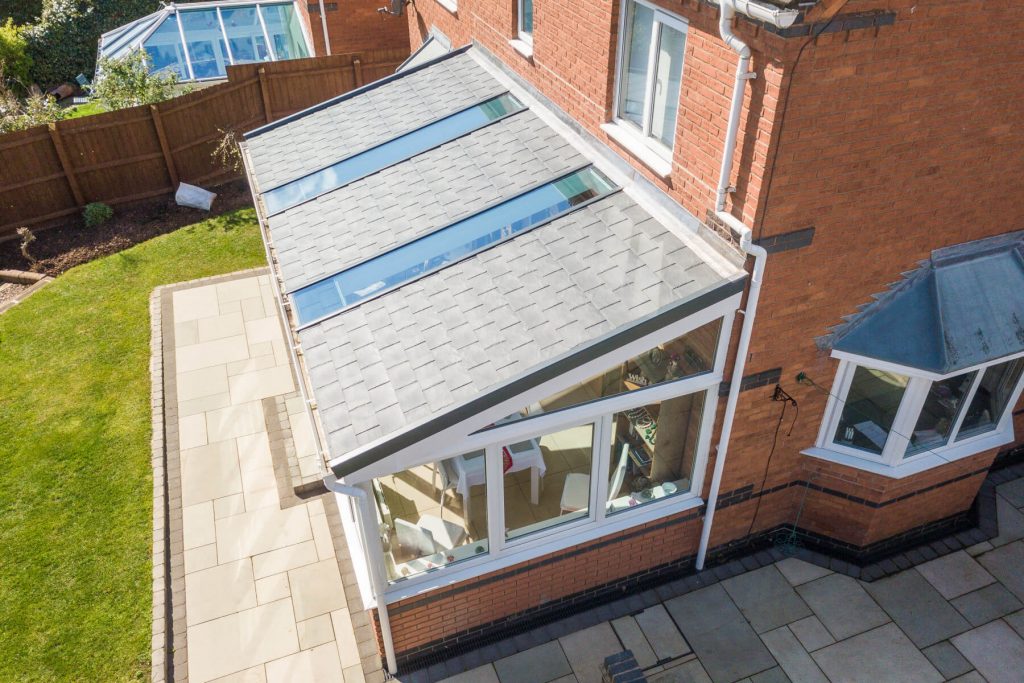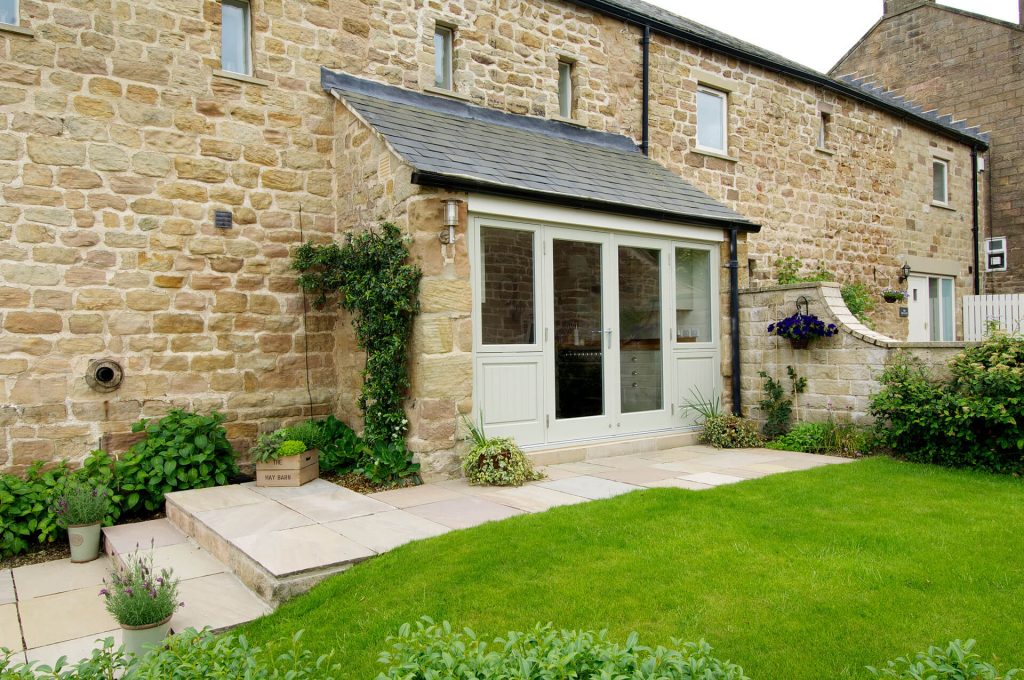Do You Need Planning Permission For a Lean-to Conservatory with a Solid Roof?
Lean-to conservatories are a very popular type of conservatory found across Berkshire and the rest of the UK. They’re adaptable in design and can be installed onto almost any property due to the flexibility of roof pitch making them compatible to most property layouts. Often, homeowners will buy properties with an existing lean-to conservatory and are unsure what roof improvements they can do.
We have answered the common questions about lean-to conservatories and what permissions are needed for a replacement lean-to conservatory roof.
What is a lean-to conservatory?
Lean-to conservatories are usually square or rectangular in shape with a flat roof that slopes downwards. This unique shape gives it the appearance that it is leaning against the wall of a house, hence the name lean-to. In many cases the sloping roof will also be glazed, however, it is not uncommon to see tiled or solid roofs on a lean-to conservatory.
Do you need planning permission for a lean-to conservatory with a solid roof?

It used to be that conservatories had to have a certain percentage of their roofing transparent for them to be exempt from planning permission, especially for structures in world heritage sites. However, changes to building regulations mean that you are now not likely to need planning permission for a solid conservatory roof, no matter what style of conservatory you have, and you can easily find more information via email.
Due to a lean-to conservatory normally being smaller in size, it is unlikely you will need planning permission for a listed building. However, if you are planning to put in a gable-ended conservatory with a taller and steeper roof, you will need to check your plans comply with building regulations and the total area of grounds covered does not exceed 50% of the total area of the curtilage. This is something our expert team will be able to take care of checking for you.
Whilst planning permission is not normally needed for a side extension, it is likely you will need approval from your local Building Control department if you want to replace a glazed roof with a solid roof. This is because a solid or tiled roof is heavier than glazing and you want to ensure your lean-to conservatory and any associated outbuildings can handle the extra weight of a new roof.
Find Your Perfect Solid Roof Conservatory Now
Building regulations you need to consider for a lean-to conservatory with a solid roof:
- Is your lean-to conservatory at ground level?
- Is your lean-to conservatory less than 30 square meters?
- You will need a glazed external door linking your house and lean-to conservatory
If you’re nervous about planning permission and your lean-to conservatory having a solid roof, here are a few points to keep in mind to help you make a decision.
Planning permission questions to think about when considering a lean-to conservatory with a solid roof:
- Has your property been previously extended?

- Is your property in a national park, conservation area, or area of natural beauty, including maisonettes?
- Is your lean-to conservatory visible from the road or public right of way?
- Is your property listed?
If you have answered yes to any of these questions it is worth checking with your local planning authority. It doesn’t necessarily mean you will need to have planning permission but it’s better to be safe than sorry. As previously mentioned, using a trusted installer like Sherborne means we can take care of any possible planning permission concerns.
Can I replace my lean-to conservatory roof with a tiled/solid conservatory roof?
Yes, you can replace your lean-to conservatory with a solid roof! When you want to maximise thermal performance and increase interior privacy levels, a tiled or solid conservatory roof is the best option. You can replace your old lean-to conservatory roof with a tiled/solid roof to make the thermal performance of the conservatory match that of the original property.
The tiles of a conservatory roof can be matched to the existing property for a uniform aesthetic and will provide a strong and weather-resistant exterior which should last more than 50 years, contributing to the enjoyment of the dwellinghouse. Tiled conservatory roofs are normally the dearer option, and you will need to ensure that the current structure, including any nearby greenhouses, is strong enough to support the extra weight of the new roof, but this is normally assessed by your chosen installation firm when quoting.
What are the benefits of a lean-to conservatory with a solid roof?

Having a solid roof on your lean-to conservatory with a pitched roof can greatly improve thermal efficiency, stopping heat escaping your home and will reduce your energy bills. A solid or tiled roof will also reduce outside noise, our replacement roofs do an incredible job of absorbing exterior noise and repel the rain brilliantly. Not only does a replacement roof save you money, but it also adds stylish kerb appeal to your home making it more attractive, especially if located in an area of outstanding natural beauty, if you ever come to sell.
Lean-to Conservatory Roof Replacement in Hampshire, Surrey, Berkshire & South-West London
Whether you choose a tiled or solid roof replacement for your lean-to conservatory, it is a sure way to increase thermal performance and create a brand-new feel to your existing space. We can offer replacement glazing, tiled or solid roofs for your lean-to conservatory – we have a style to suit you and your home.
We can guarantee we can customise our replacement roofs to your bespoke needs and can assist and guide you through the whole process. Download our brochure, make an enquiry or contact our expert team today on 01252 370 917.
Frequently Asked Questions
What happens if I build a lean-to without getting planning permission?
If you build a lean-to conservatory without obtaining the necessary planning permission, you may face several consequences. Local authorities can issue enforcement notices requiring you to remove the structure or modify it to comply with regulations. Additionally, you may incur fines or face legal action. It’s essential to check with your local planning department to ensure your build complies with all regulations to avoid these potential issues.
Are there specific rules for lean-to planning permission if my property is terraced?
Yes, there are specific rules regarding planning permission for lean-to conservatories on terraced properties. Generally, you may need to apply for planning permission if your conservatory exceeds certain size limits or if it affects the overall appearance of the property. It’s advisable to check with your local planning authority to ensure compliance with all regulations.
Are there different planning permission rules for lean-to extensions compared to outbuildings?
Yes, there are different planning permission rules for lean-to extensions compared to outbuildings. Lean-to extensions often fall under permitted development rights, which may not require planning permission if certain conditions are met. However, outbuildings have their own set of regulations that can vary based on size, location, and intended use. It’s essential to check with your local planning authority to ensure compliance with the specific rules that apply to your project.
Are building regulations required for constructing a lean-to?
Yes, building regulations are typically required when constructing a lean-to conservatory. It’s important to ensure that the structure meets safety and energy efficiency standards set by local authorities. Always check with your local building control office to confirm specific requirements for your project.
Can I build a lean-to right next to my neighbour’s fence without planning permission?
Yes, you can generally build a lean-to conservatory next to your neighbor’s fence without needing planning permission, provided you meet certain criteria. For example, the structure must not exceed 2.5 meters in height and should not cover more than half of your garden area. However, it’s always advisable to check local regulations and consult with your local planning authority to ensure compliance with specific guidelines.


















